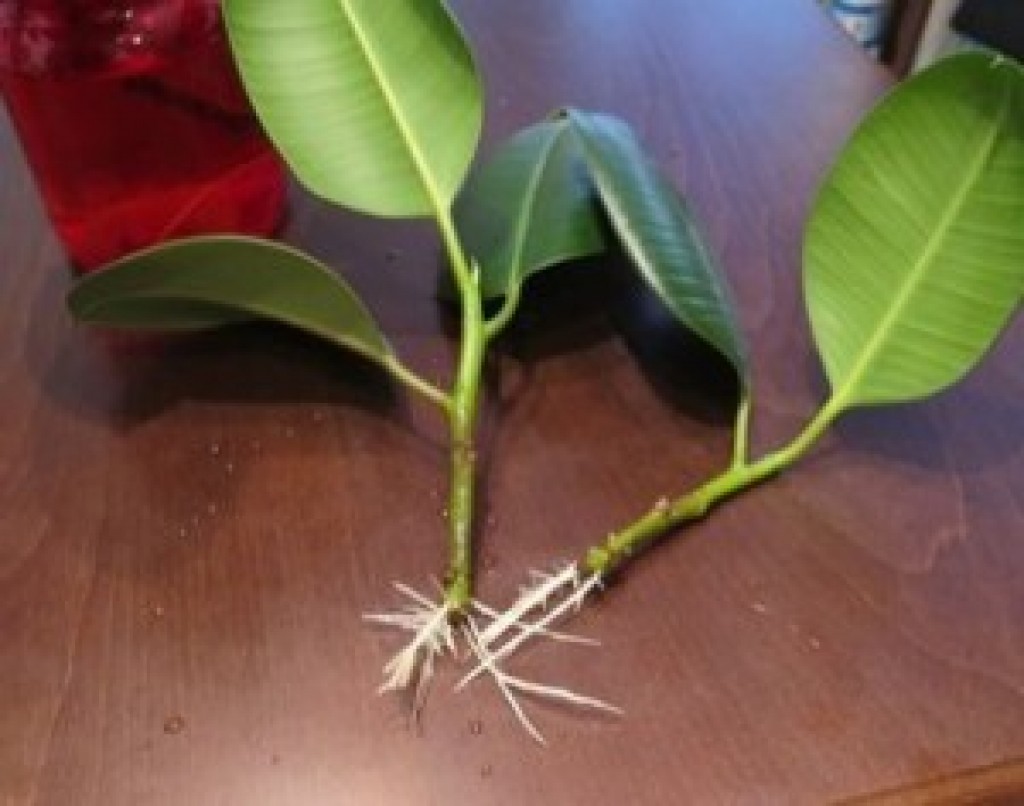
How to grow an air layer in a rubber ficus. Reproduction of ficus at home
When decorating a room, ficus is considered an ideal option, since it does not need special care and quickly gains green mass. Under favorable growth conditions, being in the natural environment, this plant is able to reach a height of thirty meters. At home, growth is significantly limited, not exceeding two meters.
Annually, at proper care, ficus adds thirty to forty centimeters in height. So that the plant is not too large, it is advised to cut it. After this procedure, the ficus begins to bush.
Ficus develops well in any room, reproduces well in many ways.
Ficus cuttings
This method is recommended to be used in the spring, so that with the advent of autumn, the ficus seedling has time to form a root system. The stalk is prepared fifteen centimeters long, cut off from the apical sections of the shoots at an oblique angle, the foliage is removed. Juice appears on the cut, which, after hardening, tightens the wound, making it difficult for the roots to develop. Therefore, the cuttings after the cut must immediately be placed in water.
Rooting is possible in water or soil. The water container should be made of opaque glass so that algae does not form. The temperature regime is recommended to withstand about twenty-five degrees of heat. The level of humidity is also important, which should not fall below eighty percent. A good option would be to place the seedling under a glass jar, which will create a greenhouse effect. The ficus takes root for a month, then the seedling is allowed to be transplanted.
If you decide to plant the ficus immediately in the soil, hold the stalk in water for a couple of hours to wash off all the juice. After that, the seedling is slightly dried and planted in a mixture of peat, sand and vermiculite, mixed in equal proportions. And in this embodiment, the greenhouse device will be absolutely superfluous. When the first leaves appear, the cutting can be transplanted - its roots will form.
sheet method
In this case, a ficus cutting is taken in the form of a piece of a stem with one or two leaves. The bottom is cut at an angle along the very internode. The seedling is placed in the soil, deepening to the beginning of the leaf petiole. The sheet is formed into a tube, tied with electrical tape or pulled with an elastic band.  The temperature and humidity of the air are maintained at the same level as when ficus is propagated by cuttings.
The temperature and humidity of the air are maintained at the same level as when ficus is propagated by cuttings.
Another method - layering
This method of propagating ficus is convenient if you are pursuing the goal of rejuvenating your plant in order to restore its decorative effect. To do this, the bark is cut off on the trunk with a strip of two or three centimeters. You can just make cuts. The damaged area is wrapped in wet moss, covered with polyethylene. The moss pad should always be moistened. After a certain time, roots will begin to develop at this point. At this point, the top of the plant can be cut off and planted in a new flowerpot.
Features of reproduction of ficus
With all methods of propagation of ficus, the roots of the sprouts are formed in places that have mechanical damage. And the larger such a surface, the stronger the roots will be. To this end, deepening the cutting into the ground, not very deep cuts are made on it, resembling scratches.
In order for the ficus rooting process to be successful, it is allowed to use special chemical compounds that promote the formation of roots. Ficus cuttings are soaked in similar compositions before planting, and the second method is also used, when the sections are sprinkled with a powdered preparation. The second method is good when the ficus takes root in the ground.
Several people have already asked me whether it is possible to propagate a ficus with a leaf, such as Saintpaulia.


The answer is simple: no, you can't. And this applies to all ficuses, not only with "thin" leaves, like Benjamin's ficus, but also with denser, leathery ones.
![]()
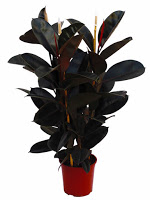

Ficuses are propagated by stem cuttings (apical) and air layering. Ficus seeds at home are propagated much less frequently (mainly those species that are rarely found on sale).
The best time to breed ficus cuttings- spring Summer. A green apical shoot is chosen (lignified and strongly semi-lignified take longer to take root; lignified ones may not take root at all) with two or three nodes about 15 cm long. The stalk is cut with a sharp knife (no need to cut obliquely).In this case, the cut must be made below the sheet (knot) by 0.5-1 cm. The bottom sheet is cut off.Cut the middle leaves1/2 length, and the top -can be left or reduced by a third. In large-leaved ficuses with leathery leaves, a cutting with 2-3 nodes is taken in this way, the rest of the cuttings may have more nodes (do not take too long cuttings, however), but the lowest leaves are also removed from them in the middle part of the cutting - cut in half.
Leaf pruning is necessary to reducethe area of evaporation from the remaining leaves, until young roots appear and earn.
For rooting, you can also take stem cuttings (that is, cuttings without the upper part of the shoot, but they do not always give beautiful young shoots after rooting - they usually grow sideways).
After cutting the cutting, the milky juice from the cut is washed off with running water. You can instead put the stalk in a glass of water for a while.
You can root in a soil mixture, in water, in sand, in a mixture of vermiculite + sand, in moistened sphagnum moss, etc. Before placing the cutting in a pot, it can be dipped in phytohormone powder. This procedure accelerates root formation in the cutting.
cuttingimmerseinto the moistened soil mixture so that the lower dormant bud (the node where the bottom leaf was cut off) is in the soil mixture at a depth of 1-2 cm. The soil mixture is lightly tamped around the cutting. The pot with the handle is placed in a warm place (the temperature should not fall below+25°C). In cooler conditions, be sure to make a greenhouse: cover the pot with the handle with a plastic bag or a cut bottle, you can cover it with a glass jar. Periodically, the greenhouse is slightly opened for ventilation. The substrate must always be moistened (not waterlogged!).
Usually cuttings take root within 1-1.5 months.If the cutting is rooted in water or in sphagum, then one should not wait until the roots that have appeared grow strongly. 0.5-1 cm of roots is enough to plant a cutting in a pot. This must be done carefully so as not to break off the young roots.
Air layers propagate ficuses with thick stems.
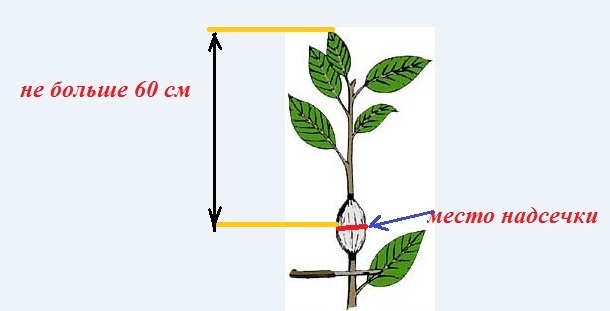
Ficuses are now an interior item in many homes, because they do not require special attention to yourself. Few people know that this plant can not only perform a beauty item at home. Since ancient times, it is believed that Ficus carries within itself a good atmosphere for those who want to have children. It is enough just to establish good soil for the life of the plant. And he will do his job. For those who are just starting to engage in floriculture, the acquisition of this flower will be indispensable.
Every lover of flower breeding is very interested in the reproduction and transplantation of ficus at home. Many people ask the question: how to propagate ficus at home?
You can transplant it at home closer to spring or summer, when the air temperature is almost stable, and the drops are insignificant. Depending on what type of plant, it can be propagated in several ways.
The first is cuttings. For propagation by cuttings, you will need separate segments in length from 15 to 18 cm and suitable soil for ficus. The indicated length of the cutting should be cut correctly from the beginning of the tip of the flower head, but so that it is 1 cm before the first branch and it will be more convenient to plant. A cut of the flower gives milky juice, which must be washed off with water at home. After making a cutting about 2-3 cm long, it will form one cm before and one cm after the first branch. We put the resulting so-called process in clean water, which is better to be changed every 2-3 hours so that completely poisonous juice comes out. It is better for the cutting to create the effect of a greenhouse, so it will give roots faster and more. In clean water, the resulting species will grow for 2-3 weeks, or as soon as the roots grow to the desired size, and these are from 2 cm.
How to improve growth and appearance colors?Our readers constantly turn to us with questions: "How to improve the appearance of flowers? How to fertilize for better growth? How to make flowers bloom? Why do flowers grow poorly?" Literally half a year ago we published a review about Biofertilizers. Some of the readers began to implement our recommendations in life. Here is actually one of the reviews about Biofertilizer for indoor plants, which will help your flowers become even more beautiful.
Read...
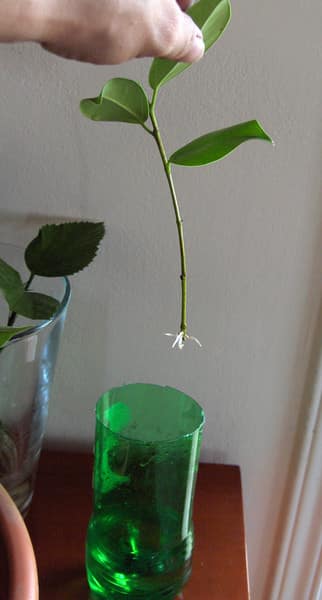
In a pot prepared in advance, with a diameter of about 9-12 cm, it is necessary to put drainage on the bottom, for better air circulation. It’s better not to experiment with the earth at home, but to buy specialized soil for ficus. We correctly fill such soil over the drainage so that 1 cm remains to the edge of the pot. This is necessary so that when watering the flower, the earth remains moist. In the filled soil in the middle, you need to make a small hole, put the prepared stalk in it and plant it correctly, sprinkling and compacting the surface of the soil with a light touch, and water it.
Simple rules for growing tropical indoor trees
Put the shoot planted at home in a flower pot in a bright place, but at the same time it should not be exposed to sunlight. After three to five weeks, new shoots will come to the surface. Planting with cuttings is always 99% successful, and therefore it grows faster.
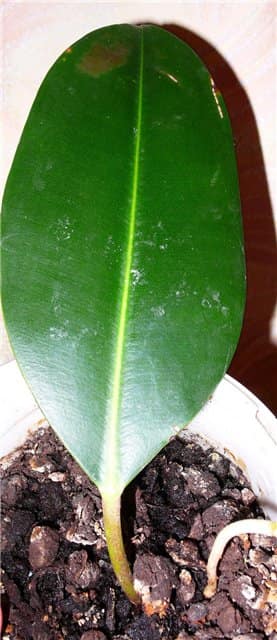
The second method to plant a plant at home is with a leaf. This method does not mean that you can root with a simple process in a pot of earth. No, this type of transplant is similar to the previous one, but you just don’t need to wait until the root gives a process. Reproduction of ficus in this way is assumed by the cutting on which the leaf is located. We cut off from the end of the flower by 10-15 cm, but so that the cut is at the very internode. In this case, the shoot, in order to plant it, will turn out to be larger, somewhere around 10-15 cm. Juice appears at the cut site, it must be washed immediately and the trunk dried. For planting, you first need to prepare the soil by pouring drainage and specialized soil for ficuses on the bottom of the pot. Next, you need to take the cut branch and immerse it in the prepared dishes for planting before the start of the first sheet. A feature of this action is its further work with leaves. They must be rolled into one tube and fixed correctly with a thread or elastic band. Thus, evaporation will not occur during rooting, and new leaves will already noticeably appear at the cut site after 2-3 weeks.
The third type of reproduction is quite difficult at home, but effective. If you want to transplant a plant, due to the high pressure of the walls of the dishes, then you can take your time and use this view. It contributes not only to the rejuvenation of the flower, but also to its reproduction. This species is well suited to plants that have green leaves only at the top, or does not look very nice when the trunk is very long. To do this, it is advisable to clearly measure where you want to see the branching, it is also called an air layer. Having chosen a place, you need to correctly remove the sheet and make a small incision in its place with a sharp knife. In this place, with slow movements, so as not to break the trunk, we insert a match or some other wooden object of this size. Then plant a small piece of wet moss on top. And take the resulting ball and wrap it with a film, for this you can cut a disposable bag in which you need to make small holes, since the resulting cut needs air to form a new life. If everything is done correctly, then in 2-3 weeks new roots will appear at this place. When they become large and wrap the moss, the film must be removed. And then you can cut off the top to create another flower to plant in a dish.
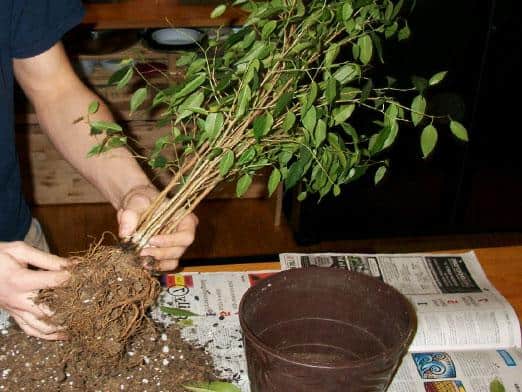
At home, it is very easy to propagate tree-like types of flowers, which, for density and color saturation, are useful to cut on the sides. It is better to grab several branches for propagation at once, which must be washed from white juice and placed in clean water. After 2-3 weeks, each branch will give a small process. It is necessary to transplant the ficus into special soil, because the earth in it already contains all the nutrients for healthy growth. For beauty, three mini-trees can be rooted by intertwining them, and then over time the flower will look like a real tree. Whatever name is given to each method of reproduction, they should all be planted with cuttings in a pot.
And a little about the secrets of the Author
Have you ever experienced unbearable joint pain? And you know firsthand what it is:
- inability to move easily and comfortably;
- discomfort when going up and down stairs;
- unpleasant crunch, clicking not of their own free will;
- pain during or after exercise;
- inflammation in the joints and swelling;
- causeless and sometimes unbearable aching pain in the joints ...
Now answer the question: does it suit you? Can such pain be endured? And how much money have you already "leaked" for ineffective treatment? That's right - it's time to end this! Do you agree? That is why we decided to publish an exclusive interview with Anastasia Volochkova, in which he revealed the secrets of getting rid of joint pain, arthritis and arthrosis.
Attention, only TODAY!
What is a ficus know even those who are not particularly interested indoor plants. This undemanding, easy to care for and perhaps the most famous representative of flora has long found its place in houses, apartments, offices and other premises. If you are the owner of this flower, then most likely you have already wondered: how to propagate rubber ficus to make this beauty even more? Let's figure it out together.
Reproduction of rubber ficus: main stages
First of all, it is important to understand that rubber ficus reproduces only vegetatively. For this, the upper cuttings or the not yet compacted crown of the stem with one leaflet are used. Many experts argue that cuttings are most effectively taken. The process itself is recommended to start in late spring or early summer.
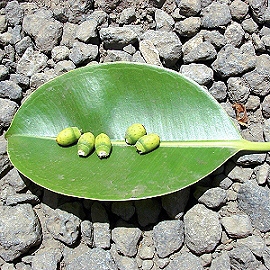
It was at this time that the ficus is actively growing. You need to cut the cutting with a clean, sharp tool, and the cut must be treated with crushed coal to prevent the occurrence of infectious infections. The separated stalk is lowered into a container with water until milky juice is formed.
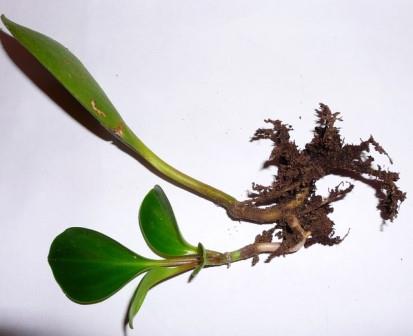
Many flower growers practice the use of heteroauxin, a substance that stimulates root growth in cuttings. You can buy this drug in any specialized store. It dissolves in the water into which the cutting is lowered. After the appearance of the rhizome, you can proceed to the next stage - planting the cuttings in the soil.

In addition to a certain air temperature in the room, which should be at least 18-21 degrees, soil is important for a successful transplant. It is necessary that the soil be loose and light, so it is advisable to purchase a substrate based on peat and coarse sand. Soil can also be mixed
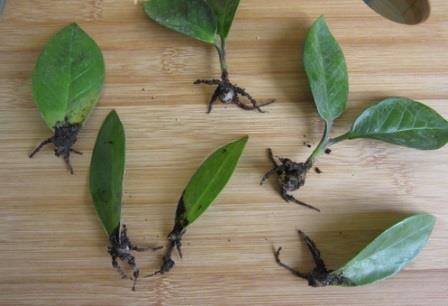
In the container or pot where the cutting will be transplanted, a small expanded clay drainage is placed on the bottom, and then the substrate is covered with the top layer. The cutting itself is placed in the soil in such a way that the root system and a small part of the trunk are completely covered with earth.
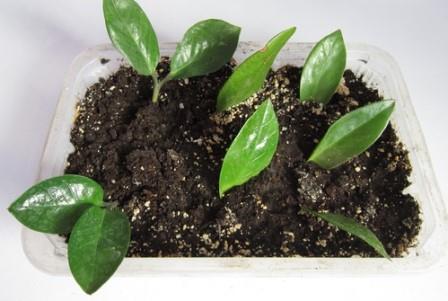
To protect young ficuses from negative influences or sudden changes in temperature, it is recommended to make a mini-greenhouse. To do this, each cutting is covered with a plastic bag. Do not forget about regular watering, fertilizers and a sufficient amount of sunlight. And in a few months you will be able to enjoy the new rubber-bearing ficus. We hope that our advice will help you properly propagate rubber ficus and enjoy the results.

Video: Ficus propagation
A variety of decorative ficuses will allow you to create a winter garden on the windowsill. These flowers are endowed with amazing properties - protecting the house from bad energy, the ability to bring happiness to the family, and the like. But to create a winter garden in an apartment, it is important to know how to propagate ficus at home. This is also available to a novice florist.
We propagate ficus at home - the main rules
There are three options for plant propagation:
- air layers;
- cuttings;
- branch with a leaf.
Regardless of the type of ficus and the method of reproduction, consider the following rules:
- take care of breeding these plants in spring or early summer. Ficus is afraid of sharp winter temperature fluctuations. Climate change will become stressful and the plant will die;
- the new flower cannot stand bright sunlight. Place the pot with the planted ficus in the shade;
- when using the cutting method, be sure to rinse the cut area with warm water, juice comes out of it. Then leave the branch to lie aside so that the cut dries out a little;
- do not take young shoots for cuttings. They don't fit. Use older shoots for propagation.
We propagate ficus at home by cuttings
You will have to use cuttings of an adult ficus. He must be at least two years old. Have scissors or a sharp knife ready. Breeding process:
- put a pot of adult ficus on the table. Cover the surface in advance with oilcloth or paper;
- count 15-17 cm from the top of the flower. The distance to the first node should be approximately 1 cm;
- cut at an angle the apical cutting 15 cm long. You can also take cuttings from the stem with three leaves;
- Carefully remove all leaves from the cutting and place it in a bowl of water.
For rapid growth of the plant, put it in a warm place for 3-4 weeks. It is advisable to make a small greenhouse. The optimum temperature for rooting is 24 degrees Celsius. We saw that young leaves appeared on the branch - plant the plant in a pot with soil. Use sand and peat as soil. Use a small pot for planting. Insufficiently rooted shoots can be wrapped with polyethylene. Then accustom the flower to the home climate.
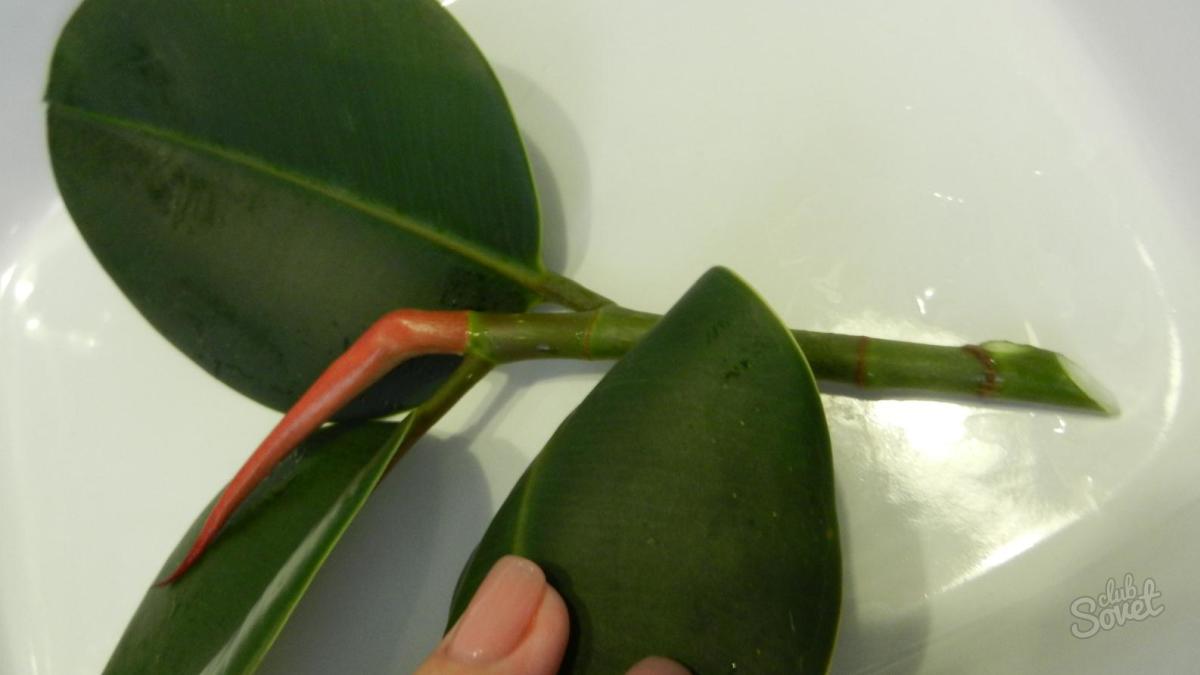
We propagate ficus at home with a branch with a leaf
You can propagate the flower with cuttings with young green leaves. Cut it as indicated in the second paragraph. But choose the place of the cut on the trunk of the ficus along the lowest internode. Plant the finished shoot immediately into the ground to the base of the leaf. Carefully twist the leaves on the branch into a tube and wrap with a soft thread or elastic band for reliability. Place the flower for rooting in a room with a temperature of 27 degrees Celsius. Further care for young ficus is similar to conventional cuttings. After 3-4 weeks, the young flower will take root, and you will see the first shoots.
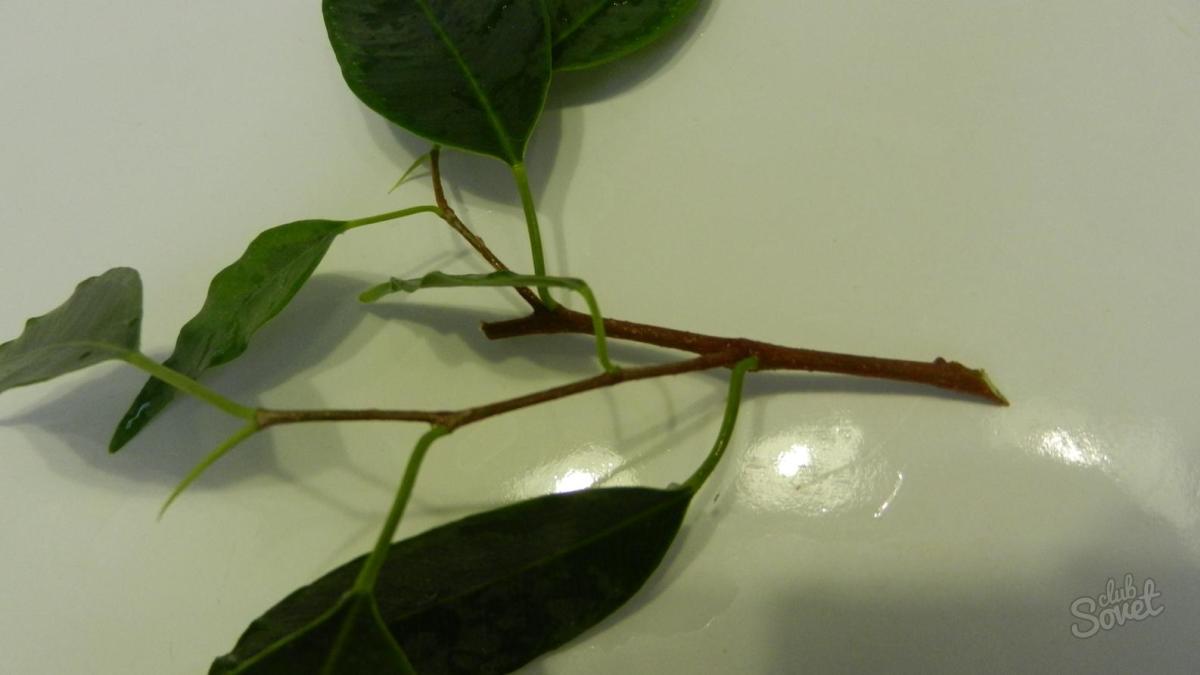
We propagate ficus at home by air layering
This method of reproduction is used if the ficus stem is very bare. Your actions are as follows:
- decide at what height of the ficus trunk you want to get layering;
- remove the leaf from the trunk and in its place make a shallow incision with a blade or clerical knife;
- remove with cotton wool the liquid that flows from the "wound";
- place a chip or match in the incision;
- cover this place with slightly damp moss and cover with cling film. Leave some air under the film and fix it securely on the barrel. Make sure that the moss does not dry out while rooting takes place.
After a month, you will see young roots under the film at the incision site. Do not remove the film until the moss has grown roots. Well, if they break through it. Cut off new shoots and plant young ficuses in separate pots with peat.
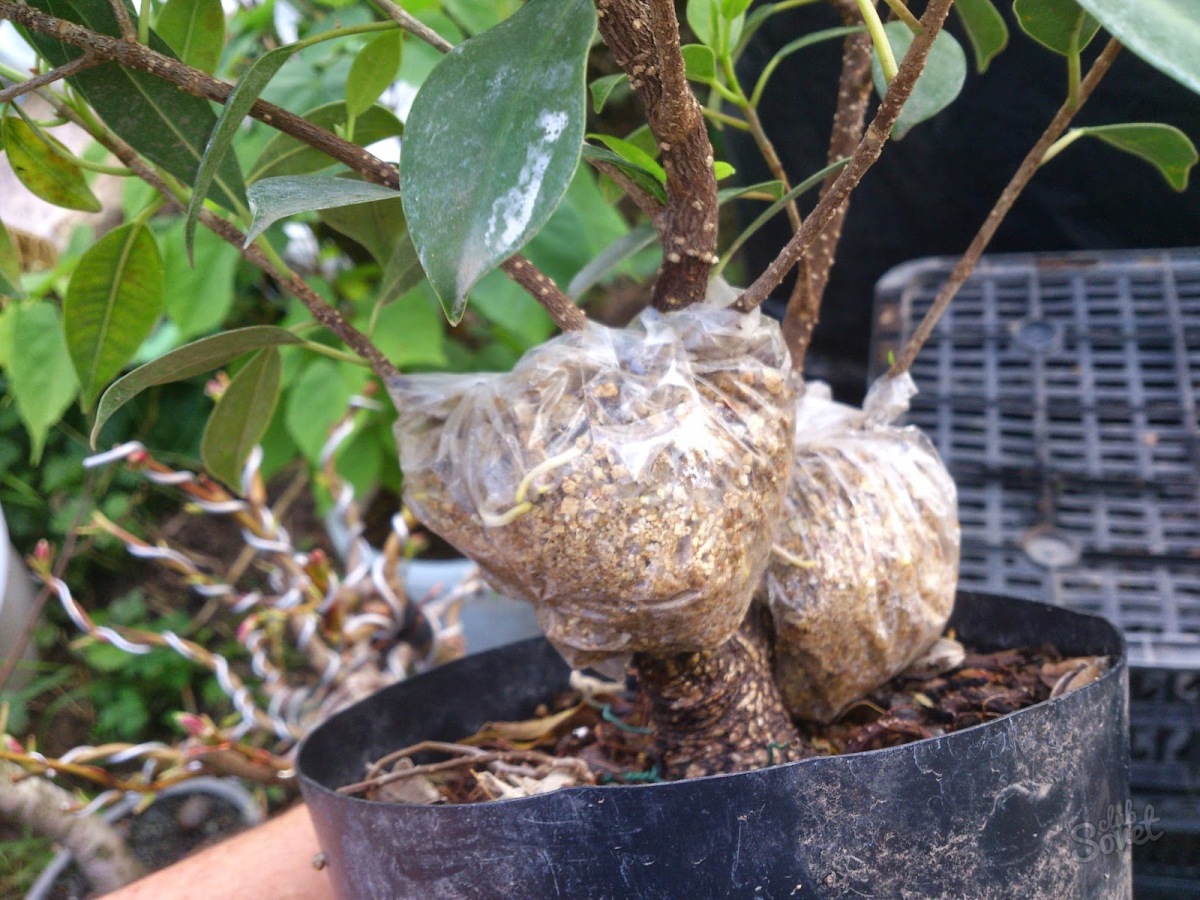
Experienced flower growers consider cuttings and propagation by air layering to be the best ways. Choose what is convenient for you and plant a winter greenhouse on the windowsill.